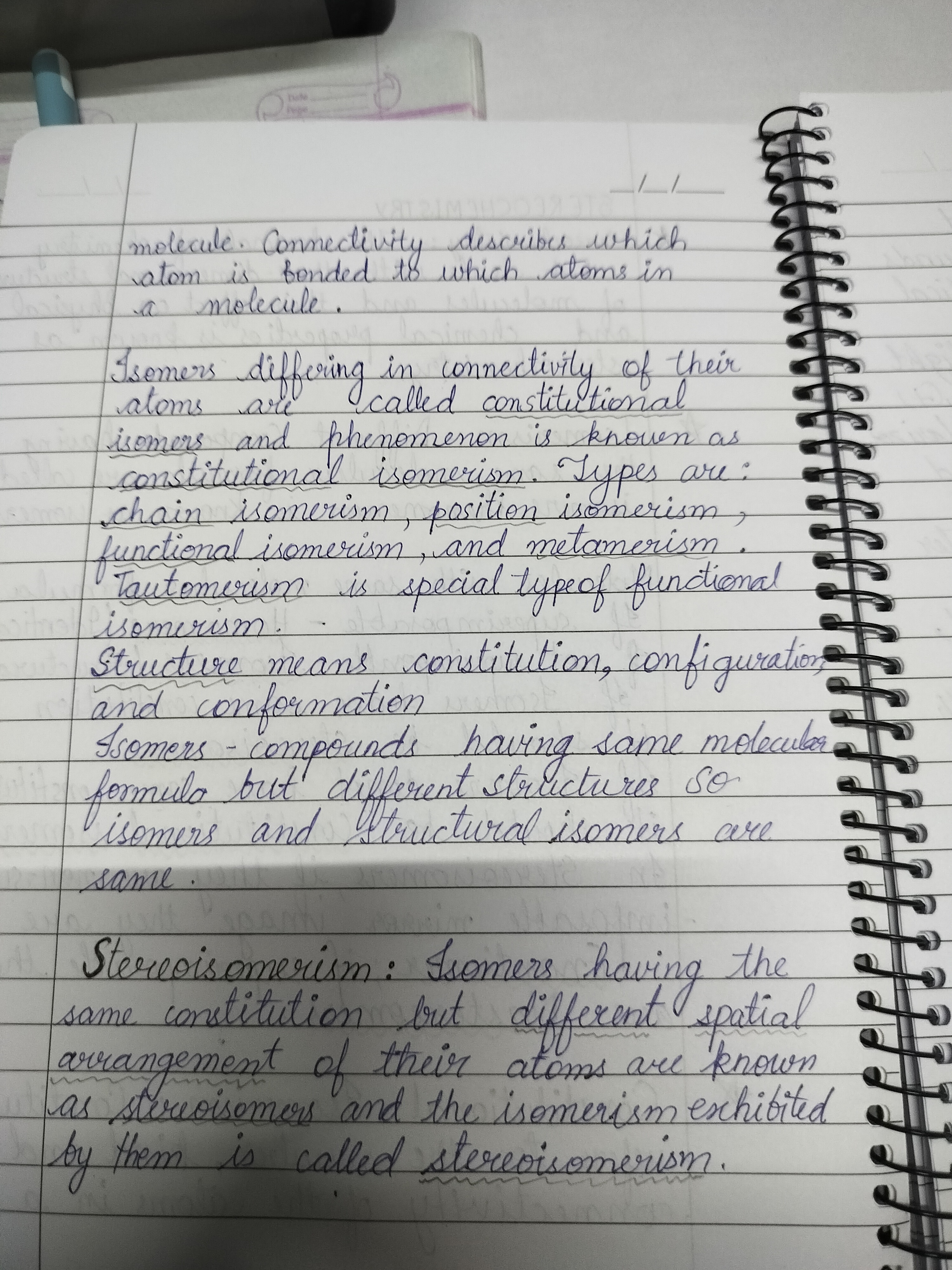What are the different types of isomerism in chemistry and their definitions?

Understand the Problem
The text discusses the concept of isomerism, outlining the different types of isomers based on connectivity and spatial arrangement of atoms in molecules. It provides definitions and examples of various forms of isomerism such as constitutional isomerism, structural isomerism, and stereoisomerism.
Answer
The main types of isomerism are constitutional (structural) and stereoisomerism.
The final answer is that the main types of isomerism are constitutional (or structural) isomerism and stereoisomerism. Constitutional isomerism includes subtypes such as chain, position, functional isomerism, and tautomerism. Stereoisomerism includes spatial arrangement differences.
Answer for screen readers
The final answer is that the main types of isomerism are constitutional (or structural) isomerism and stereoisomerism. Constitutional isomerism includes subtypes such as chain, position, functional isomerism, and tautomerism. Stereoisomerism includes spatial arrangement differences.
More Information
Isomerism is important in chemistry because isomers can have vastly different properties despite having the same molecular formula. Constitutional isomers have different connectivity of atoms, while stereoisomers have the same connectivity but different spatial arrangements.
Tips
A common mistake is confusing types of stereoisomers. Enantiomers are mirror images whereas diastereomers are not.
Sources
- Isomerism - Definition, Detailed Explanation, Types, Examples of ... - byjus.com
- A Brief Guide to Types of Isomerism in Organic Chemistry - Compound Interest - compoundchem.com
- Types of Isomers: Constitutional, Stereoisomers, Enantiomers, and ... - Master Organic Chemistry - masterorganicchemistry.com
AI-generated content may contain errors. Please verify critical information